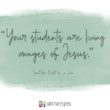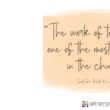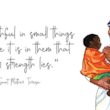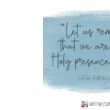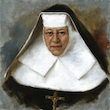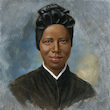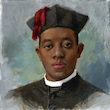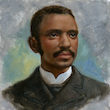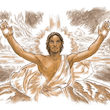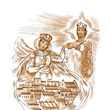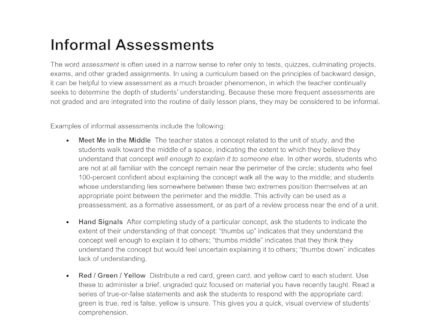Saint Edmund the Martyr (c.841-870)
Saint Edmund the Martyr was the king of Norfolk and Suffolk in England in the ninth century. Exact details about his life are fuzzy. It is known that Edmund defended his people against Danish invaders and was killed when the …
Saint Agnes of Assisi (1197-1253)
Saint Agnes was the sister of Saint Clare, and also her first follower. At first, her family disapproved of her choice, and tried to bring her back home. However, when they tried to take her from the monastery, her body …
Saint Rose Philippine Duchesne (1769-1852)
Sister Rose Duchesne was known for praying without ceasing. She was also a woman who gave thanks to God, even though as a missionary to the United States she lived a life of great physical hardship on the frontier. Sister …
Saint Elizabeth of Hungary (1207-1231)
Saint Elizabeth was born in 1207 as a princess of Hungary. She lived there until she was four, and then went to live with her betrothed, Louis, the Landgrave of Thuringia. When Franciscan friars arrived in Germany, Elizabeth not only …
Saint Gertrude (1256-1301)
Saint Gertrude was born at Eisleben, Saxony, in 1256. She was entrusted to the care of Benedictine nuns at the age of five. When she grew up, she became a Benedictine nun herself, and was elected abbess of the monastery …
Saint Albert the Great (1206-1280)
Saint Albert the Great was born in 1206 to a wealthy and powerful German family. He was well educated, and despite disapproval from his family he joined the Dominicans. He was an educator at Paris and at Cologne, and had …
Saint Laurence O'Toole (1128-1180)
Saint Laurence O'Toole was born in the year 1128 in Ireland. At the age of 10 he became the hostage of one of his father's enemies and brought to the king of Leinster, who mistreated him. After two years of …
Saint Frances Xavier Cabrini (1850-1917)
Francesca Cabrini was born in northern Italy in 1850, the youngest of 13 or more children. As a child she dreamed of being a missionary to faraway lands. When she was 18, she tried to join a religious community, but …
Saint Josaphat (c.1580-1623)
This saint, who was a bishop and martyr, spent his life working for the unity of all Christians. He was a reform-minded bishop who brought order and proper procedure into his diocese. Josephat also helped bring the Eastern Church of …
Saint Martin of Tours (c.316-397)
Saint Martin became a Christian at the age of 18. Even though his father was a military officer, Martin believed that Christians were not allowed to kill. He became a conscientious objector, even though he was imprisoned for refusing to …
Saint Leo the Great (c.400-461)
Saint Leo was a pope who lived in the early centuries of the Church. Elected in 440, he was a talented administrator who was equally gifted at spiritual leadership. He was the first pope to claim to be Peter’s heir …
Saint Benen (d.467)
Saint Benen was the son of an Irish chieftain. He was baptized by Saint Patrick, and was so enraptured by him and his work that he asked the saint if he could accompany him on his travels as a missionary. …
Saint Godfrey (c.1066-c.1115)
Saint Godfrey started his monastic life at a very young age. He was raised from the age of five in the Benedictine Abbey of Mont-Saint-Quentin, where his godfather was abbot. He was given his own tiny habit, and lived life …
Saint Willibrord (658-739)
Saint Willibrord was born in England in 658. He felt called to spread the Good News through missionary work in Germany. With great zeal and enthusiasm, he followed his call and constructed churches and an abbey. Willibrord was experiencing great …
Saint Winoc (d.717)
Saint Winoc was brought up and educated in Brittany. He is said to have possible noble lineage. He was called to become a monk at Saint Peter's monastery at Sithiu under Abbot Saint Bertin. He and three companions founded a …
Saint Sylvia (d.593)
Saint Sylvia was the mother of Saint Gregory the Great. When Sylvia's husband passed away, her son Gregory converted their home into a monastery. Silvia was then able to retire to a life of solitude in a small home in …
Saint Charles Borromeo (1538-1584)
Saint Charles was a bishop in Milan, Italy. His appointment as bishop was delayed because the Council of Trent needed his skill as a behind-the-scenes leader when serious disagreements occurred—something he could not offer if he had been a bishop …
Saint Martin de Porres (1579-1639)
Martin de Porres lived in Peru in the 16th century. The sin of racism was alive and well, and he, being of mixed race, was treated like a slave. His family lived in poverty because his Spanish father abandoned them …
Saint Marcian (d.387)
Saint Marcian was a hermit in the fourth century. During that time, living the secluded, prayerful life of a hermit was very popular. Marcian lived in a tiny cell that was too small for him to stand up straight or …
Solemnity of All Saints
Naming people “saints” acknowledges that they led holy lives, did the work of God, and are now with God. A saint is anyone who lives with God, whether officially recognized or not. (Taken from "Good News Day by Day: Bible …
Saint Wolfgang of Regensburg (924-994)
Saint Wolfgang was born in Swabia, Germany, and attended school near the Abbey of Reichenau. While at school, Wolfgang met Henry, a young man of noble birth who would become the archbishop of Trier. Wolfgang remained in contact with Henry, …
Saint Alphonsus Rodriguez (1533-1617)
Saint Alphonsus Rodriguez was born in Segovia, Spain. He was the son of a wool merchant who died when Alphonsus was young, leaving the business to him. He married and had three children. Not long after, he found himself a …
Saint Narcissus of Jerusalem (99-215)
Saint Narcissus became the bishop of Jerusalem when he was already advanced in years. While he was bishop, one of his critics accused him of a crime that he did not commit. The claim was not believed by the Christians …
Sts. Simon and Jude (1st century)
The two Apostles we celebrate today are Simon the Zealot and Judas, the son of James. Zealots were members of a Jewish nationalist group who wanted to bring down Roman rule. Judas is normally referred to as Jude in English, …
Saint Frumentius (4th century-c.380)
Saint Frumentius was born in Lebanon. He and his brother, Saint Aedesius, were the only survivors of a shipwreck on the Red Sea. They were discovered and taken to the royal court of Aksum, Ethiopia, where they were made members …
Saint Rusticus of Narbonne (d.462)
Saint Rusticus was born in Gaul and was the son of Bishop Bonosus. He developed the talent of preaching, and used his gift to share the Good News in Rome before entering monastic life in France. Rusticus was appointed bishop …
Saint John Roberts (1577-1610)
Saint John Roberts was born in Wales in 1575. After studying at Oxford for two years, he left to study law, and joined the Catholic Church after visiting Notre Dame Cathedral in Paris. While in Paris, John began studying to …
Saint Anthony Claret (1807-1870)
Saint Anthony Claret was born in Catalonia, Spain in 1807. As the son of a weaver, he took up his father's craft, but began studying for the priesthood to become a Jesuit. He was not able to join the Jesuits …
Saint John of Capistrano (1386-1456)
Saint John was born in Capistrano, Italy, in 1385. He was the son of a former knight. He studied law, became a lawyer in the courts of Naples, and was eventually appointed the governor of Perugia. He was incarcerated after …
Saint Abercius Marcellus (d.200)
Saint Abercius Marcellus was the bishop of Hierapolis in what is modern-day Turkey as well as a missionary. He was incarcerated for a period of time because he created a danger to civil order by countering paganism. During his imprisonment, …
Saint Hilarion (c.291-371)
Saint Hilarion was born in Palestine. He converted to Christianity and felt a calling to a life of prayer and solitude. Hilarion spent time in Egypt with Saint Anthony, who also sought prayer and solitude. While living out his vocation, …
Saint Artemius (d.363)
Saint Artemius was a soldier under Emperor Constantine the Great. He was appointed as the imperial prefect of Egypt by Emperor Constantius, and used his influential position to spread the Arian heresy. During the reign of Julian the Apostate, Artemius …
Saint Isaac Jogues (1607-1646)
Throughout the history of the Church, Catholics have imitated Jesus' willingness to suffer and die for the sake of the Kingdom of God. This was particularly true of some missionaries who preached the Gospel to people who were hostile to …
Saint Luke (1st century)
Luke is one of the four Gospel writers, or Evangelists, of the New Testament, but, unlike the others, he also wrote a second volume entitled Acts of the Apostles. Luke’s Gospel emphasizes the compassion of Jesus and his concern for …
Saint Ignatius of Antioch (d.107)
Ignatius of Antioch died a martyr's death when he was thrown to the lions in 107. He was a Greek Christian who became bishop of Antioch in 69. Antioch, in Syria, was the most important Christian community outside of Jerusalem. …
Saint Marguerite d’Youville (1701-1771)
Saint Marguerite d'Youville was born in rural Quebec in 1701 into serious poverty, and dropped out of school to help her widowed mother and younger brothers and sisters. She married unhappily when she was 21, and when her husband died …
Saint Teresa of Avila (1515-1582)
Saint Teresa of Avila was a mystic, a teacher of the art of prayer, a Spirit-filled leader of a religious order, a woman of great courage, and an individual who lived life to the full. Born in Spain, she was …
Saint Callistus I (d.223)
As a young slave, Pope Saint Callistus I was given the task of maintaining the collected funds which were given as alms by Christians. Callistus lost the funds he was supposed to be minding, and ran away from Rome. He …
Saint Edward the Confessor (1003-1066)
Saint Edward the Confessor was born a prince in England. His father was overthrown during the Danish invasion, and Edward and his brother were sent to be killed in Denmark. The officer in charge of the transport took pity on …
Saint Seraphin of Montegranaro (1540-1604)
Saint Seraphin was born into a poor family in Italy. He spent his youth as a prayerful shepherd. After young Seraphin and his brother were orphaned, his brother began to mistreat him. Seraphin felt called at the age of 16 …
Saint Kenneth (c.525-c.599)
There are many legends surrounding Saint Kenneth. According to one popular legend, he was born in Glengiven, Ireland. He became a monk and was ordained a priest. Kenneth spent some time in Ireland preaching, and then went to share the …
Saint Francis Borgia (1510-1572)
Saint Francis Borgia was born into a noble family in Spain. He became a duke and lived happily with his wife and their eight children. Unlike many nobles in Spain at the time, Francis was a true man of God, …
Saint Cirilo Bertran (1888-1934)
Saint Cirilo Bertran was born in 1888. He joined the Brothers of the Christian Schools on October 23, 1906. He was appointed as the director of his house in Turón, Asturias, Spain. Cirilo was one of the nine Martyrs of …
Saint John Leonardi (1541-1609)
Saint John Leonardi was ordained a priest and became very passionate about ministering to prisoners and the sick. His commitment and devotion attracted other young men to assist him, and they later become priests themselves. John and his fellow assistants …
Saint Sergius the Martyr (d.303)
Saint Sergius was an officer in the Roman army under Emperor Maximian. He was well liked by the emperor until he admitted to being a Christian after he and his fellow officer, Bacchus, refused to enter a temple of Jupiter. …
Saint Bruno (c.1030-1101)
Saint Bruno was born in Cologne, Germany, in approximately 1030. He stood with Pope Gregory VII in his battle against the corruption and decadence of the clergy. Bruno was also involved in the removal of a scandalous archbishop by the …
Saint Maria Faustina Kowalska (1905-1938)
Saint Maria Faustina Kowalska was born in Poland in 1905. She was a member of a large family, and held odd jobs to help out before joining the Congregation of the Sisters of Our Lady of Mercy in 1925. As …
Saint Mother Theodora Guérin (1798-1856)
Saint Mother Theodora Guérin was born in Etables, France, in 1798. Her life changed forever when her father was murdered when she was 15, and she had to care for her mother and her younger sister. After several years, she …
Saint Leodegarius (c.615-678)
Saint Leodegarius was the son of Saint Sigrada and the brother of Saint Gerinus. His born to a noble family in France and was brought up in the court of King Clotaire II. Leodegarius was a reforming bishop of Autun …
Saint Therese of Lisieux (1873-1897)
Saint Therese of Lisieux, also known as the "Little Flower," was born in Alencon, France, in 1873. While still a young girl, Therese longed to enter the Carmelite convent at Lisieux. When she was 15, the bishop gave permission, and …
Saint Jerome (c.345-420)
Saint Jerome, a Scripture scholar, translated most of the Old Testament from Hebrew. He also wrote commentaries on the Bible that are still used today. In order to do this work, he took his studies seriously. Jerome also had little …
Saint Wenceslaus (c.907-929)
Saint Wenceslaus was born in 907 near Prague. His holy grandmother raised him and wanted to put him on the throne to replace his mother, an anti-Christian. Wenceslaus eventually took over the throne. During his reign, Saint Wenceslaus focused on …
Saint Vincent de Paul (1580-1660)
Vincent de Paul made a decision to serve the poor that changed his life and changed the world. He was born in France in 1581 into a peasant family. He progressed rapidly in school, and was ordained a priest at …
Sts. Cosmos and Damian (d.303)
Cosmos and Damian were killed for their Christian faith. Other than the fact that they were martyrs, we know little about them. Legend says that they were twins who were skilled doctors in Arabia. They are venerated in that part …
Saint Sergius of Radonezh (1314-1392)
Saint Sergius was born to a noble family in Russia. His baptismal name was Bartholomew. Sergius's family was impoverished when they had to flee to Rostov, near Moscow. After the death of his parents, Sergius became a hermit, along with …
Saint Pacifico of San Severino (1653-1721)
Saint Pacifico was born into a well-off family in San Severino, Italy. He was ordained, taught philosophy, and became an accomplished preacher. Pacifico was a severe man. He fasted at all times, wore a penitential shirt made of iron, and …
Saint Padre Pio da Pietrelcina (1887-1968)
Saint Padre Pio da Pietrelcina was born on May 25, 1887. It was affirmed by his mother that he was able to see and converse with Jesus, the Virgin Mary and his guardian angel as a child. When he became …
Saint Maurice (d.287)
Saint Maurice was a soldier. He was an officer of the Theban Legion of Emperor Maximian's army. Emperor Maximian's army was made up of Christians from Upper Egypt. When he and his fellow soldiers were ordered to sacrifice to gods …
Saint Matthew (1st century)
Matthew was a Jew who collected taxes for the Romans, who occupied Israel during the life of Jesus. The tax collectors were usually hated by their fellow Jews. Some strict Jews like the Pharisees considered tax collectors to be sinners …
Saint Andrew Kim Taegon (1821-1846)
Saint Andrew Kim Taegon is among the 103 Korean martyrs canonized by Pope John Paul II in 1984. During the 18th and 19th centuries, Christians in Korea were persecuted. Openly practicing the faith meant risking death. At the age of …
Saint Januarius (d.304)
Saint Januarius was born in Italy. He was the bishop of Benevento during Emperor Diocletion's persecution of Christians. One day, Bishop Januarius went to visit two deacons and two laymen who were imprisoned. During his visit, he was also incarcerated. …
Saint Joseph of Cupertino (1603-1663)
Saint Joseph of Cupertino showed a love of prayer from a young age. He was ordained into the priesthood in 1628. Joseph is most well-known for his gift of levitating during prayer. Saint Joseph's gift of levitation led him to …
Saint Robert Bellarmine (1542-1621)
Saint Robert Bellarmine was a theologian and Scripture scholar. He was a Jesuit priest who was made a cardinal because the pope said, “He had not his equal for learning.” In spite of his brilliance and honors, Robert ate only …
Saint Cyprian (d.258)
Saint Cyprian was born in Tunisia around the year 200. He was a lawyer and professor of public speaking for most of his life, but at age 46 he became convinced that Christ told no lies, and joined the Christians. …
Saint Catherine of Genoa (1447-1510)
Saint Catherine of Genoa was beautiful, intelligent, and pious. She felt called to religious life, and attempted to enter a convent when she was 13. However, she was turned away because of her youth, and instead entered into an arranged …
Saint Notburga (1265-1313)
Saint Notburga was a servant in the kitchen of Count Henry Rattenberg in Austria. At the end of each day, Notburga took the leftovers from the day's meals into town and gave them away to the poor and starving. The …
Saint John Chrysostom (347-407)
Saint John Chrysostom was a bishop who was unpopular with the rich and powerful people of his time. He lived simply, and he preached dramatically and concretely that the rich should share with the poor and that husbands should be …
Saint Guy of Anderlecht (950-1012)
Saint Guy of Anderlecht was born into a poor family in Belgium. Even though the family had little material wealth, they had great spiritual wealth. Guy's parents were very pious, and taught him their faith. Saint Guy believed that God's …
Saint Theodora of Alexandria (d.491)
Saint Theodora was from Alexandria, Egypt, and found herself in a life of sin. However, upon realizing her sinful ways, she repented. After her atonement, she spent the rest of her life as a hermit in southern Egypt, disguised as …
Saint Peter Martinez (d.1000)
Saint Peter Martinez was born in Galicia, Spain. He began his religious life as a Benedictine monk at the Monastery of Saint Mary of Monzonzo in around 950. In 986, he was appointed the archbishop of Saint Martin of Antealares …
Saint Peter Claver (1581-1654)
Peter Claver was born in Spain and went to Colombia in South America as a missionary to serve the African slaves who had been taken there to be sold in the New World. For years he would meet the ships …
Saint Adrian (d.306)
Tradition tells us that Saint Adrian was a pagan officer at the court of Nicomedia. While at court, Adrian saw a number of Christians tortured for their faith. Captivated by their extreme courage, he converted and declared himself a Christian. …
Saint Cloud (522-560)
Saint Cloud was born into French royalty, his father the king of the Franks. When the king was killed in battle, his kingdom was divided up among his four young sons. Once one of Cloud's brothers was killed in battle, …
Saint Cagnoald (d.635)
Saint Cagnoald began religious life after meeting Saint Columban. The religious path that he chose to take was the life of a monk. Cagnoald's love and devotion to Jesus were shared by many members of his family as well, including …
Saint Bertin (d.709)
Saint Bertin was born in France in the beginning of the seventh century. He began his religious life at the Abbey of Luxeuil, and then joined the bishop of Therouanne, who was sharing the message of Christ with the pagans. …
Saint Rosalia (c.1130-c.1160)
Saint Rosalia had a famous lineage, she was a descendant of Charlemagne. She was born in Sicily, and turned away from earthly pleasures to God when she was a young girl. Rosalia left the comforts of her home to reside …
Saint Gregory the Great (c.540-604)
When he was in his 30s, Gregory sold the many properties he owned, established seven monasteries in Italy, and distributed much of his considerable wealth to the poor. The next year he became a monk, and devoted himself to an …
Saint Ingrid of Sweden (d.1282)
Saint Ingrid was born in Sweden in the 13th century. She lived under the spiritual guidance of a Dominican priest, and became the first Dominican nun in Sweden. Ingrid established a Dominican cloister in Sweden, called Saint Martin's. When she …
Saint Giles (650-710)
Saint Giles was born in France during the seventh century. While in France, he built a monastery that became a popular halfway destination for pilgrims traveling from Spain to the Holy Land. Giles also became well known in England, where …
Saint Aidan of Lindisfarne (d.651)
Saint Aidan was born in Ireland. It is said that he may have been a student of Saint Senan before dedicating himself to monastic life. At the request of the king of Northumbria, Aidan became the bishop of Lindisfarne. He …
Saint Jeanne Jugan (1792-1879)
Saint Jeanne Jugan, also known as Sister Mary of the Cross, was born in France in 1792. She and two other companions formed a Catholic community of prayer, dedicated to teaching the catechism and assisting the poor. Jeanne then set …
Saint John the Baptist (d.30)
Saint John the Baptist was a selflessly giving religious reformer. He is quoted in Matthew 3:11 as saying, "I am baptizing you with water, for repentance, but the one who is coming after me is mightier than I. I am …
Saint Augustine of Hippo (354-430)
Saint Augustine of Hippo is one of the most significant figures in the history of Western Christianity. The influence of his many books, sermons, and letters can be found on virtually every Christian doctrine, particularly the theology of Original Sin. …
Saint Monica (332-387)
Monica was the mother of Augustine of Hippo, a difficult young man who became a great theologian and bishop. He did everything he could to avoid God, but Monica never stopped praying for him. She once declared, “Nothing is far …
Saint Teresa of Jesus Jornet Ibars (1843-1897)
Saint Teresa was born in Catalonia, Spain. She faced many hardships in her youth, finally becoming a teacher at Lerida. Teresa yearned to begin religious life, but was not accepted into the convent that she wished to enter. After she …
Saint Louis of France (1214-1270)
Saint Louis, a king of France, was born in 1214. He lost his father at a young age, and was moved to a love of holy things by his mother. He married a virtuous women, and became king two years …
Saint Bartholomew (1st century)
Saint Bartholomew is listed in the Bible as one of the Twelve Apostles. Not much is known about this saint. Some scholars believe him to be the Nathanael who is mentioned in the Gospel of John. The Apostles were tirelessly …
Saint Rose of Lima (1586-1617)
Saint Rose was born in Lima, Peru, on April 20, 1586. She was given the name Isabel, but nicknamed Rose because of her great beauty. However, Rose did not want people to admire her beauty, because it might lead to …
Saint Antoninus (d.186)
Saint Antonius held a very gruesome profession; he was a Roman public executioner. He was involved in the trial proceedings of Saint Eusebius. During the proceedings, Antonius received a vision, and converted to Christianity. Because he proclaimed himself a Christian, …
Saint Pius X (1835-1914)
Saint Pius X is one of the 20th century's greatest popes. He had grown up in a poor family, and he was often embarrassed by the showiness and excess of the papal court. He often saw this insistence on grandeur …
Saint Bernard of Clairvaux (1090-1153)
Saint Bernard of Clairvaux was called at the age of 20 to leave his family and join the Monastery of Citeaux. He was soon joined in his new monastic lifestyle by numerous family members and friends. Bernard was fervent and …
Saint John Eudes (1601-1680)
Saint John Eudes was born in France in 1602. He felt called to religious life, and was ordained a priest at the age of 24. When plagues struck France in 1627 and in 1631, John ministered to those afflicted. He …
Saint Helen (d.330)
Saint Helen was the mother of the first Christian emperor, Constantine. She married the Roman general Constantius Chlorus. In 292 he divorced her to marry the emperor's stepdaughter. Helen's ex-husband and eventually her son each became emperor. Her son, Constantine, …
Saint Joan of the Cross (1666-1736)
Saint Joan was born in 1666 in France. Her parents owned a small business, which she took over upon their deaths. In her business dealings, Joan was notorious for her greed and heartlessness to beggars and the poor. However, Joan's …
Saint Stephen of Hungary (975-1038)
Saint Stephen of Hungary was baptized at a young age. His father was the chief of the Magyars, and Stephen succeeded his father as chieftain. Stephen married the daughter of Duke Henry II, and dedicated much of his time to …
Saint Tarsicius (3rd or 4th century)
Saint Tarsicius was either a layman or a deacon who lived sometime in the third or fourth century. He was attacked by a pagan gang while he was on his way to deliver the Eucharist to a bedridden Christian friend. …
Saint Maximilian Kolbe (1894-1941)
Maximilian Kolbe was born in Poland in 1894 with the name Raimund Kolbe. He attended a Franciscan seminary as a teen, where he took the name Maximilian. Despite having tuberculosis, he was ordained a Franciscan priest and earned two doctoral …
Saint Hippolytus (170-235)
Saint Hippolytus was a presbyter in Rome. He had a strong passion for discipline and was a very important theologian and a productive religious writer. He maintained that the pope should come down harder on heretics and stop listening so …
Saint Hilaria (d.304)
Saint Hilaria and her daughter, Saint Afra, hid their bishop from harm during the Diocletian persecutions. In turn, their bishop converted them. Saint Afra was martyred because she refused to sacrifice to pagan gods. After her daughter was martyred, Hilaria …
Saint Clare of Assisi (1193-1253)
Saint Clare of Assisi was of noble birth, but when she was 18 she was so moved by the Lenten sermons of Saint Francis of Assisi that she renounced all her possessions to become a nun. Her family and friends …
Saint Lawrence Martyr (d.258)
Saint Lawrence was a deacon martyred at Rome around the year 250. One tradition tells us that, during a time of persecution, Roman authorities demanded that Lawrence give up the Church's treasures to the emperor: Lawrence replied that he would …
Saint Edith Stein (1891-1942)
Edith Stein was born to a Jewish family in Breslau, Germany (now Wroclaw, Poland). As a teenager she turned away from Judaism and professed atheism. Years later, after becoming a noted philosopher, Stein was drawn to Catholic thought. Her reading …
Saint Dominic (1170-1221)
Saint Dominic de Guzman was a Spanish theologian and the founder of the Order of Friars Preachers. At the age of 14 he went to the university to study theology and philosophy, and was ordained a priest as a young …
Saint Cajetan (1480-1547)
Saint Cajetan began his adult life by first becoming a lawyer and then turning to the priesthood. He was ordained at 36, and at the age of 42 established a hospital in Venice, Italy, for those suffering from incurable ailments. …
Saint Hormisdas (d.523)
Saint Hormisdas was born in Frosinone, Italy, in 450. He was married before he was ordained, and had a son, Silverius, who followed in his father's footsteps and also became a pope. Hormisdas became a deacon during a time of …
Saint Addai (2nd century)
Legend has it that Saint Addai was ordered by Saint Thomas to go to the court of King Abgar the Black. Tradition tells us that Abgar, the king of Edessa, was stricken with an incurable sickness. Hearing of Jesus' power …
Saint John Vianney (1786-1859)
Saint John Vianney was born near Lyons, France, in 1786. He worked as a shepherd boy on his father's farm, and only attended the village school briefly when he was nine. When he entered the seminary to study for the …
Saint Peter Julian Eymard (1811-1868)
Saint Peter Julian Eymard was born in La Mure d'Isere, France. Peter joined the seminary at Grenoble, and was ordained a priest in 1834. At first, Peter's father opposed his choice to pursue religious life, which made the decision difficult …
Saint Eusebius of Vercelli (283-371)
Saint Eusebius was born on the island of Sardinia, Italy. After his father was martyred, he moved to Rome, where he eventually became a bishop. He stood up for the Church during one of its most difficult periods. This hard …
Saint Alphonsus Liguori (1696-1787)
Saint Alphonsus Liguori was the forefather of the Redemptorists and a bishop. He was born into a noble family in Naples, Italy. He was educated at the University of Naples, where he earned a doctorate in law by the age …

Document
Terms Related to the Church
A worksheet where students are asked to define several vocabulary terms related to the Church and write a short essay on which term means the most to them.

Document
Our Beliefs about Eternal Life
Use the information found in articles 32 and 33 of the student book to complete this worksheet.

Document
The Goodness, Blessedness, and Beauty of the Created World
A reflection worksheet on the goodness, blessedness, and beauty of the created world.

Document
Living the Call of Vatican Council II
A worksheet that looks at the dignity of the human person, the necessity of community, and human beings’ relationship to the universe.

Document
Understanding the Lord's Prayer
An activity to help students understand the Lord's Prayer from "The Catholic Faith Handbook for Youth" Teacher Guide.

Document
Praying with Scripture A Guided Meditation
A guided meditation on praying with scripture from "The Catholic Faith Handbook for Youth" Teacher Guide.

Document
Meditation on a Goal or Concern
A meditation on a goal or concern from "The Catholic Connections Handbook for Youth" Teacher Guide.

Document
Pray in Good Form
A worksheet, from "The Catholic Faith Handbook for Youth" Teacher Guide, to assist students in researching and presenting different prayer forms.

Document
Prayer 101 An Introduction
An introduction to prayer from "The Catholic Faith Handbook for Youth" Teacher Guide.

Document
What Is Prayer
A worksheet, found in “The Catholic Faith Handbook for Youth” Teacher Guide, that is based on students’ current understanding and experience with prayer.

Document
Vocabulary for Unit 6
A vocabulary sheet from Unit 6 of "The Catholic Faith Handbook for Youth" Teacher Guide.
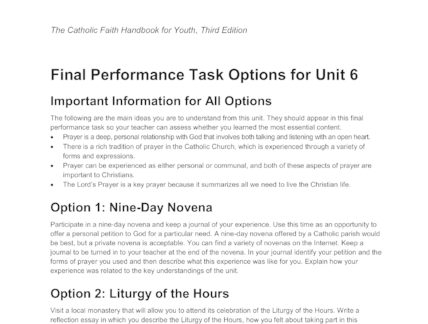
Document
Final Performance Task Options for Unit 6
Options for final performance tasks for Unit 6 of "The Catholic Faith Handbook for Youth" Teacher Guide.

Document
Vocabulary for Unit 5
A list of vocabulary terms and definitions for Unit 5 of The Catholic Faith Handbook for Youth, Third Edition.
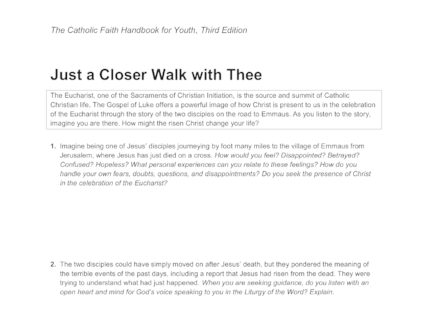
Document
Just a Closer Walk with Thee
A worksheet where students are asked to read and reflect on the Gospel of Luke’s powerful image of how Christ is present in the celebration of the Eucharist through the story of the two disciples on the road to Emmaus.

Document
Vocabulary for Unit 4
A list of vocabulary terms and definitions from Unit 4 of The Catholic Faith Handbook for Youth, Third Edition.

Document
Vocabulary for Unit 4
Vocabulary terms, and their definitions, for Unit 4 of The Catholic Faith Handbook for Youth Teacher Guide.

Document
Could I Walk in Your Shoes?
A survey that will help students consider how difficult it might be to walk in the shoes of another person who may be quite different from them.

Document
The Goodness of Creation
A worksheet on the goodness of creation, using Scripture passages from the Book of Genesis.

Document
My Understanding of the Mission of Jesus Christ
A worksheet on students’ understandings of the mission of Jesus Christ.
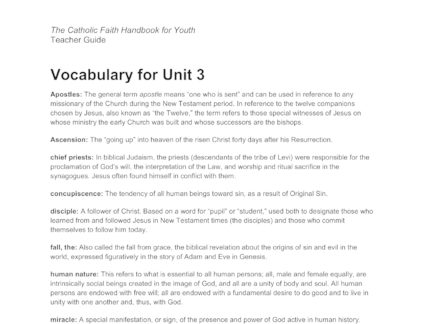
Document
Vocabulary for Unit 3 of “The Catholic Faith Handbook for Youth”
Vocabulary terms and definitions for Unit 3 of “The Catholic Faith Handbook for Youth.”

Document
What Is Faith?
An activity on the best description of faith, based on students’ experiences and understanding.

Document
Who Is Jesus?
An activity where students rate their level of agreement on statements about Jesus.

Document
Vocabulary for Unit 2 of “The Catholic Faith Handbook for Youth”
Vocabulary terms and definitions for Unit 2 of “The Catholic Faith Handbook for Youth.”

Document
Vocabulary for Unit 1 of “The Catholic Faith Handbook for Youth.”
Vocabulary terms and definitions for Unit 1 of “The Catholic Faith Handbook for Youth.”

Document
What Do I Know About Catholicism?
An assignment where students test their knowledge of Catholicism.

Document
Where Is Your Faith Life Right Now?
A wrap-up activity for Section 5 of “Jesus Christ: God’s Love Made Visible,” on where your Faith life is right now.

Document
Summary of Jesus' Revelation of God's Plan
A wrap-up summary of Jesus’ Revelation of God’s plan, from Section 4 of “Jesus Christ: God’s Love Made Visible.”

Document
Reflection on the Greatest Commandments
A reflective homework assignment on the greatest Commandments, from Section 4 Part 4 of “Jesus Christ: God’s Love Made Visible.”

Document
Core Elements of a Parable
A homework assignment on the core elements of a parable, from Section 4 Part 4 of “Jesus Christ: God’s Love Made Visible.”
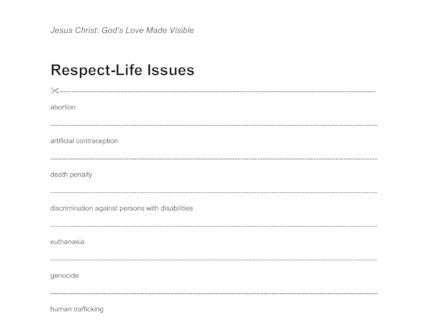
Document
Respect-Life Issues
A number of terms that deal with respect-life issues, from Section 4 Part 2 of “Jesus Christ: God’s Love Made Visible.”

Document
Jesus' Ministry
An activity on Jesus’ Ministry, from Section 4 Part 1 of "Jesus Christ: God's Love Made Visible."

Document
Scripture Passages about the Incarnation, from Section 3 Part 1 of "Jesus Christ: God's Love Made Visible"
An activity on Scripture passages about the Incarnation.

Document
Homework: Experiencing Good News, Then and Now, from Section 3 Part 1 of "Jesus Christ: God's Love Made Visible"
A homework assignment on experiencing the Good News, then and now.

Document
Vocabulary for Unit 8 of “The New Testament: The Good News of Jesus Christ”
Vocabulary terms and definitions for Unit 8 of “The New Testament: The Good News of Jesus Christ.”

Document
Paul's Response to the Early Christian Communities
A group assignment on Paul’s response to the early Christian communities.

Document
Vocabulary for Unit 7 of “The New Testament: The Good News of Jesus Christ”
Vocabulary terms and definitions for Unit 7 of “The New Testament: The Good News of Jesus Christ.”

Document
The Apostles Peter and Paul
A series of questions on the Apostles Peter and Paul, to be answered in a small group.

Document
Vocabulary for Unit 6 of “The New Testament: The Good News of Jesus Christ”
Vocabulary terms and definitions for Unit 6 of “The New Testament: The Good News of Jesus Christ.”
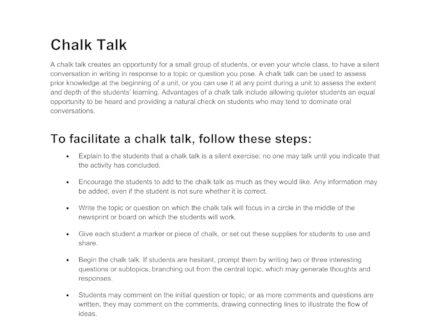
Document
Chalk Talk
Steps on how to facilitate a silent conversation in writing in response to a topic or question posed.
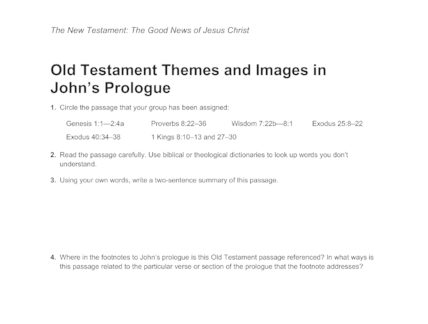
Document
Old Testament Themes and Images in John's Prologue
A worksheet on the Old Testament themes and images in the prologue of the Gospel of John.

Document
Exploring John's Christology
A worksheet where the critical questioning method is used to explore John’s Christology.

Document
Vocabulary for Unit 5 of “The New Testament: The Good News of Jesus Christ”
Vocabulary terms and definitions for Unit 5 of “The New Testament: The Good News of Jesus Christ.”
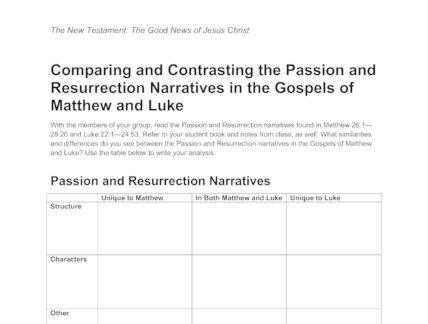
Document
Comparing and Contrasting the Passion and Resurrection Narratives in the Gospels of Matthew and Luke
A group worksheet on comparing and contrasting the Passion and Resurrection narratives in the Gospels of Matthew and Luke.
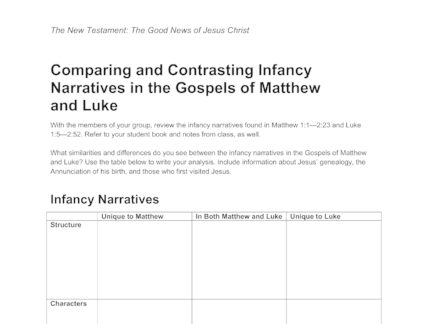
Document
Comparing and Contrasting Infancy Narratives
A group worksheet on comparing and contrasting infancy narratives in the Gospels of Matthew and Luke.

Document
The Reign of God in the Gospel of Luke and Today
A group worksheet on how the Reign of God is presented in the Gospel of Luke and in today’s culture.
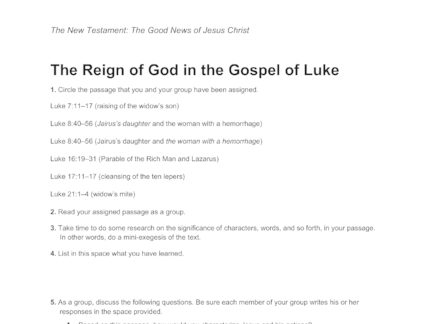
Document
The Reign of God in the Gospel of Luke
A group worksheet on how the Reign of God is presented in the Gospel of Luke.

Document
Vocabulary for Unit 4 of “The New Testament: The Good News of Jesus Christ”
Vocabulary terms and definitions for Unit 4 of “The New Testament: The Good News of Jesus Christ.”

Document
Introducing Biblical Criticism
An article on introducing biblical criticism in the classroom.

Document
Bloom's Taxonomy
A short reading where the six levels of Bloom’s taxonomy of the cognitive domain are explained.

Document
Synoptic Parallels Questions
A group worksheet where students examine parallels in the synoptic Gospels.

Document
Sustained Silent Reading Log Instructions
Instructions for students’ sustained silent reading logs.

Document
Vocabulary for Unit 3 of “The New Testament: The Good News of Jesus Christ”
Vocabulary terms and definitions for Unit 3 of “The New Testament: The Good News of Jesus Christ.”

Document
Sustained Silent Reading
An article on how to use sustained silent reading as an effective tool in the classroom.

Document
Vocabulary for Unit 2 of “The New Testament: The Good News of Jesus Christ”
Vocabulary terms and definitions for Unit 2 of “The New Testament: The Good News of Jesus Christ.”

Document
Sunday Lectionary Readings: God’s Ongoing Story of Love for Humanity
A group assignment on several sets of Sunday Lectionary readings.

Document
Dogmatic Constitution on Divine Revelation (Dei Verbum, 1965)
A worksheet that examines several chapters of "Dei Verbum" using group discussion.

Document
Vocabulary for Unit 1 of “The New Testament: The Good News of Jesus Christ”
Vocabulary terms and definitions for Unit 1 of “The New Testament: The Good News of Jesus Christ.”

Document
Meet Me in the Middle
A worksheet where students are asked to make connections between different things, concepts, and terms.

Document
Analysis of Revelation, Chapter 1
A number of questions that guide students in an analysis of chapter 1 of the Book of Revelation.

Document
Vocabulary for Unit 8 of “The Catholic Youth Bible” New Testament Teacher Guide
Vocabulary terms and definitions for Unit 8 of “The Catholic Youth Bible” New Testament Teacher Guide.

Document
Socratic Seminar Ticket
A number of questions that students need to answer before they are allowed to participate in the socratic seminar on early Christian communities.

Document
Vocabulary for Unit 7 of “The Catholic Youth Bible” New Testament Teacher Guide
Vocabulary terms and definitions for Unit 7 of “The Catholic Youth Bible” New Testament Teacher Guide.

Document
Characters in the Acts of the Apostles
A worksheet where students are asked to choose a character from the Book of Acts, and answer several questions on their respective account.
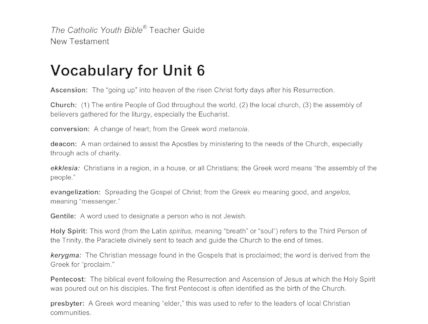
Document
Vocabulary for Unit 6 of “The Catholic Youth Bible” New Testament Teacher Guide
Vocabulary terms and definitions for Unit 6 of “The Catholic Youth Bible” New Testament Teacher Guide.

Document
Vocabulary for Unit 5 of “The Catholic Youth Bible” New Testament Teacher Guide
Vocabulary terms and definitions for Unit 5 of “The Catholic Youth Bible” New Testament Teacher Guide.

Document
Journaling on Discipleship
Several question prompts on discipleship that students can use when journaling.

Document
Movie: A Life Devoted to the Poor
A series of reflection questions to be asked after viewing the movie about the life of Mother Teresa.

Document
Luke's Understanding of Jesus
A worksheet where students use scripture passages from the Gospel of Luke to discover Luke’s understanding of Jesus.

Document
Vocabulary for Unit 4 of “The Catholic Youth Bible” New Testament Teacher Guide
Vocabulary terms and definitions for Unit 4 of “The Catholic Youth Bible” New Testament Teacher Guide.

Document
Analyzing Matthew's Prologue
A worksheet where students analyze the prologue of the Gospel of Matthew.

Document
A Portrait of Jesus for Jews
A worksheet where students discover how Matthew made his Gospel distinctly Jewish.


